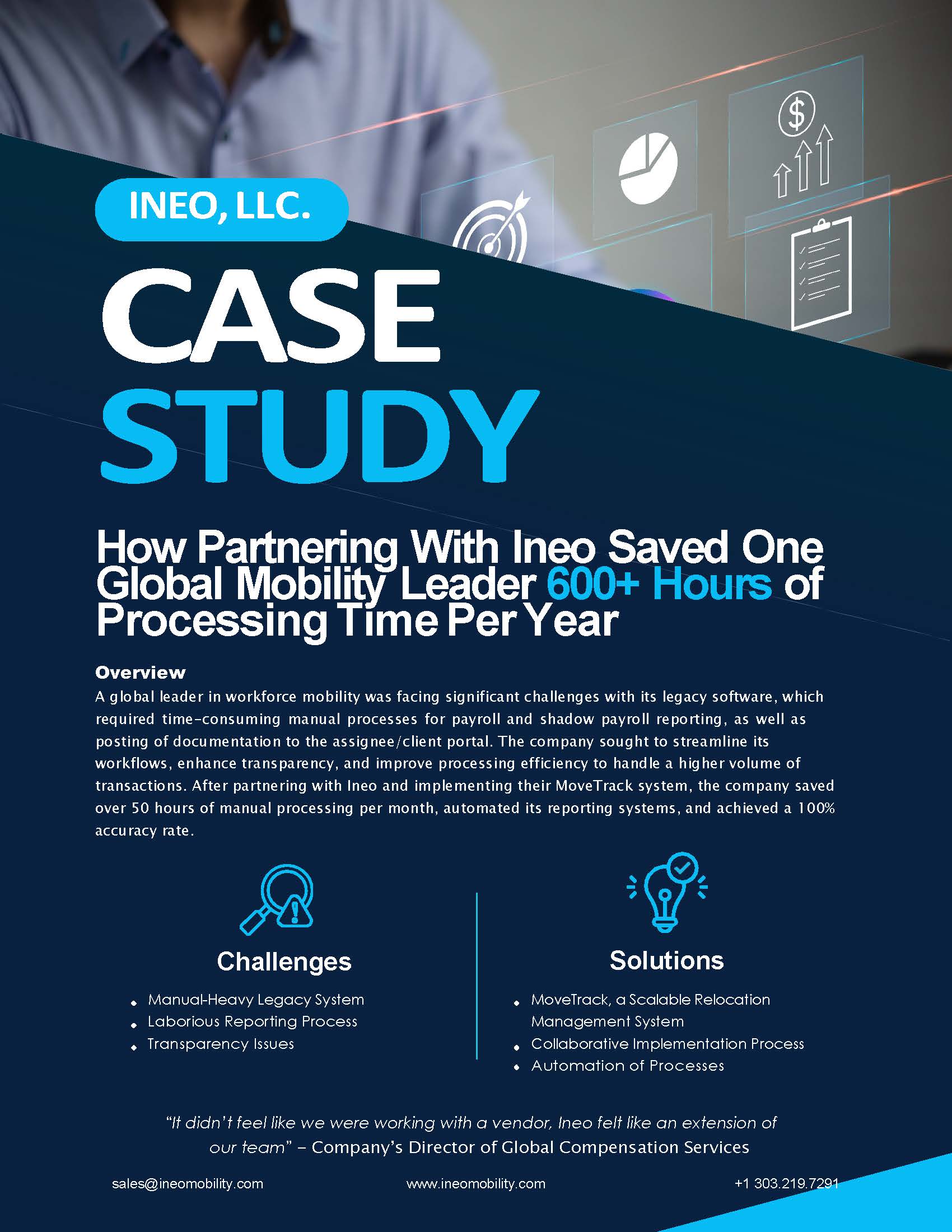The Virtues of Cost Estimates – Reducing the Unexpected

International and domestic assignments and transfers can result in unexpected financial pitfalls to the corporate employer with a mobile workforce. A prime example is a tax incurred by the employee, possibly even after an assignment has been concluded. Such unexpected outcomes confront a company with difficult decisions. Does the employer or the employee absorb the cost? If the employer, which entity – host or home – is responsible? Is the host entity still in existence to pay the tax invoice or will the home entity be saddled with the expense? These decisions have real ramifications, including negative impact on a company’s fiscal year profit, a large reduction in the employee’s expected compensation, and reputational damage to the assignment program – the ultimate talent management nightmare.
A Best Practices Approach
To reduce these risks, the mobility program should produce a cost estimate encompassing the length of the assignment, or for all policy elements of a permanent relocation. A properly prepared cost estimate provides necessary information for determining the financial viability of an assignment or transfer, informs employee compensation decisions, and produces valuable information for the company’s accounting department.
The most accurate cost estimates utilize a template mapped to the employer’s relocation policy, the related entitlements (or compensation items) authorized under the policy, and the associated assignment tax costs under the company’s tax policy. Entitlements include payments made directly to the transferee and payments made on behalf of the transferee. Tax costs include those individual income and social taxes to be paid by the employer. If the transferee is tax equalized, then the hypothetical tax expected to be collected from the transferee is used to offset the actual host and home (if any) taxes expected to be paid by the employer. In combination, these items provide the most comprehensive and accurate estimate of costs for the assignment or relocation.
The best time to prepare a cost estimate is at the planning stage of an assignment, when ample data leads to informed decision making about assignment viability. However, it’s never too late to prepare a cost estimate to set corporate and employee expectations of assignment or transfer costs.
From the cost estimate, the following documents are then generated:
- Assignment Letter: This contractual agreement lists the approved compensation and entitlements between the employer and employee and is signed by each party before the assignment begins.
- “Balance Sheet”: The balance sheet reports the periodic compensation to be delivered to the employee as agreed to at assignment initiation. It can be updated if compensation components change during the assignment period. The balance sheet is intended to be shared with the assignee and payroll department.
- Payroll Instructions: The compensation reported on the balance sheet is translated into payroll instructions, segregated into instructions for each entity paying the individual during their assignment.
Key Benefits
A vital use of the cost estimate is to provide the company’s finance department with a clear line of sight to assignment/transfer related costs for accurate budgeting and accrual processes, greatly eliminating future, negative surprises. For international assignments, the most comprehensive cost estimate will include not only outlays for expatriation compensation and reimbursements/expenses during the assignment, but also repatriation move costs and overall tax expenses. Users of the information provided by the cost estimate should be advised that certain expenses – especially the taxes calculated – should be accrued for in the proper periods; however, relief of those expenses may not occur until well after the assignment has ended. This depends on the home and host countries involved, length of the assignment, and the nature of the compensation and assignment entitlements.
Companies with the most success at controlling and accounting for their costs monitor their actual expenses during the assignment and compare those actuals to the budgeted amounts. They also account for the tax expenses on a year-by-year basis. Problems can arise if accruals are relieved too early or never relieved at all.
The cost estimate is also an excellent tool for identifying potential cost savings. Opportunities abound for managing tax expenses as well as compensation and entitlement savings, providing those savings are compliant with the policy(ies) developed by the company for its assignee population. Further, the cost estimate provides a powerful mechanism to share cost expectations across business units for understanding of – and agreement to – the financial implications of the assignment.
While the financial implications are important, the most successful company-supported mobility programs consider the human factors first and foremost. While it’s recommended not to share the cost estimate with the assignee, the relocation of the family (where applicable) and its assimilation into the host environment will play a significant role in the success of the assignment. Cultural training for both the expatriation and repatriation of the assignee’s family ought always to be considered and planned for. Preparation of the cost estimate should trigger pursuing these considerations and their associated expenses, ultimately leading to the approval or disapproval of the assignment.
A centralized cost estimate process is a powerful tool toward ensuring a successful transfer or assignment. It reduces risk of unexpected financial obligations by both employer and employee, accurately projects profitability, identifies cost savings opportunities, and enhances decision making among business units and stakeholders.
ABOUT THE AUTHOR: Michael J Gatto, CPA, is Manager, Global Mobility for Ineo LLC. He leverages, on behalf of his clients, 30 years of experience in global assignment management with a specialty in expatriate taxation. Having been on international assignment himself – spending 2 ½ years in Basel, Switzerland – Mike brings a personal understanding of the needs of the mobile employee and the requirements for successful assignment management.
Global Mobility Resources
Learn more about what’s going on at Ineo and insights into the complex world of global mobility from the industry’s top thought leaders and innovators.
Request A Demo
Whether you are new to the world of global mobility or you’ve been in the business for a while, Ineo is here to assist you.
The best way to learn how Ineo’s global mobility software can help your company revolutionize your global mobility program and support your business strategy is to see it in a demo.
Fill out this form to get started today.
Get Started






